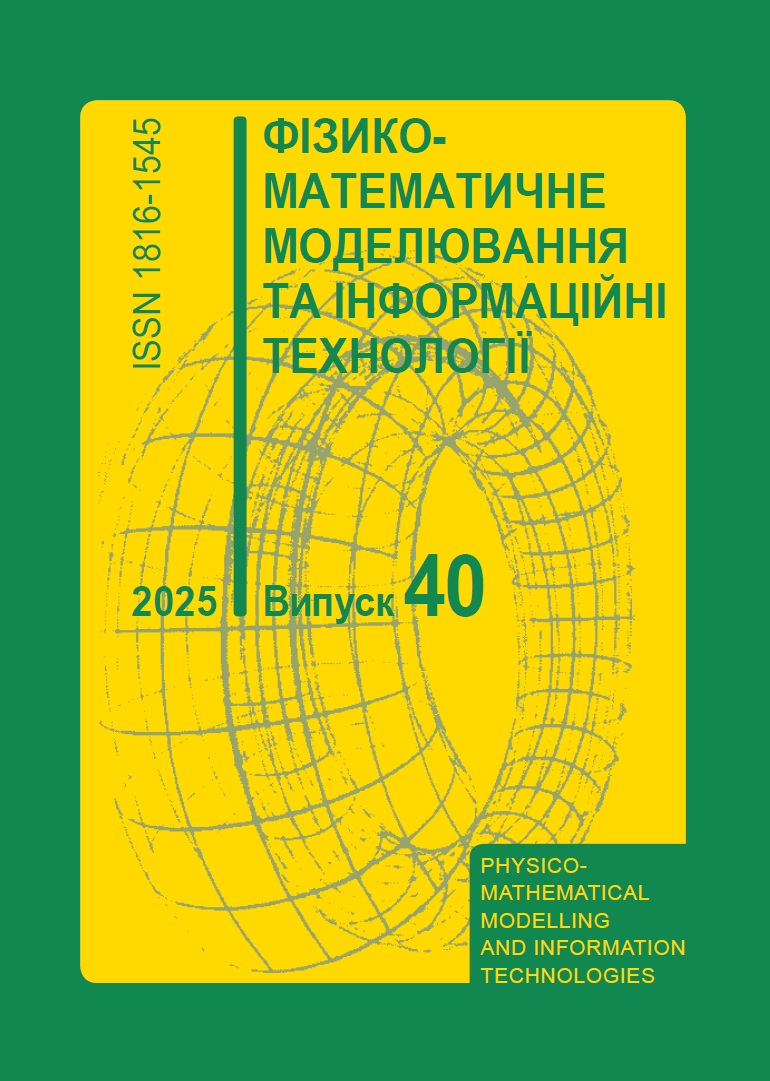Аналіз використання активаційних вейвлет - функцій у вейвлет - нейронних мережах категоризації серцевих скорочень ЕКГ
Анотація
Точна та автоматизована класифікація серцевих скорочень на електрокардіограмі (ЕКГ) є фундаментальною для діагностики та лікування серцево-судинних захворювань (ССЗ), однак вона залишається складним завданням через комплексність і варіабельність сигналів ЕКГ [1]. У цьому дослідженні розглядається ефективність використання різних вейвлет-функцій, зокрема Морле, мексиканського капелюха, Габора, Шеннона та Гаусса, як функцій активації в архітектурі вейвлет-нейронної мережі (WNN) для класифікації серцевих скорочень ЕКГ [3]. Використання загальнодоступного набору даних, отриманого з баз даних MIT-BIH Arhythmia та PTB Diagnostic ECG, зокрема зосередження на 5-класовій категоризації аритмії на основі стандарту Асоціації з удосконалення медичної апаратури (AAMI) [5]. Ключові висновки вказують на відмінності в продуктивності різних функцій вейвлет-активації, підкреслюючи потенційні переваги використання притаманних властивостей частотно-часової локалізації вейвлетів для фіксації дискримінаційних морфологічних особливостей у ритмах ЕКГ [7]. Дана робота підкреслює перспективність використання функцій активації на основі вейвлетів для підвищення точності та надійності моделей глибокого навчання в програмах обробки біомедичних сигналів, зокрема аналізі ЕКГ.
Посилання
Sörnmo, L., & Laguna, P. (2005). Bioelectrical Signal Processing in Cardiac and Neurological Applications. Academic Press. https://doi.org/10.1016/B978-012437552-9/50003-9
Zhang, Q., & Benveniste, A. (1992). Wavelet networks. IEEE Transactions on Neural Networks, 3(6), 889-898. https://doi.org/10.1109/72.165591
Saragadam, V., Hoffmann, M., & Heckel, R. (2023). WIRE: Wavelet Implicit Neural Representations. arXiv preprint arXiv:2301.05187. https://doi.org/10.1109/CVPR52729.2023.01775
Moody, G.B., & Mark, R.G. (2001). The impact of the MIT-BIH Arrhythmia Database. IEEE Engineering in Medicine and Biology Magazine, 20(3), 45-50. https://doi.org/10.1109/51.932724
Association for the Advancement of Medical Instrumentation. (2008). ANSI/AAMI EC57:1998 (R)2008, Testing and reporting performance results of cardiac rhythm and ST segment measurement algorithms. Arlington, VA: AAMI.
de Chazal, P., O'Dwyer, M., & Reilly, R.B. (2004). Automatic classification of heartbeats using ECG morphology and heartbeat interval features. IEEE Transactions on Biomedical Engineering, 51(7), 1196-1206. https://doi.org/10.1109/TBME.2004.827359
Mallat, S. (2008). A Wavelet Tour of Signal Processing (3rd ed.). Academic Press.
Hannun, A.Y., Rajpurkar, P., Haghpanahi, M., Tison, G.H., Bourn, C., Turakhia, M.P., & Ng, A.Y. (2019). Cardiologist-level arrhythmia detection and classification in ambulatory ECGs using a deep neural network. Nature Medicine, 25(1), 65-69. https://doi.org/10.1038/s41591-018-0268-3
Parvaneh, S., Rubin, J., Babaeizadeh, S., & Xu-Wilson, M. (2019). Analyzing the performance of different wavelet families for ECG denoising using neural networks. Sensors (Basel), 19(4), 824.
Fathony, R., Willomitzer, F., Kolter, J.Z., & Raskar, R. (2021). Multiplicative Filter Networks. In International Conference on Learning Representations (ICLR).
Авторське право (c) 2025 Ігор Думин, Адріан Наконечний (Автор)

Ця робота ліцензується відповідно до Creative Commons Attribution 4.0 International License.




